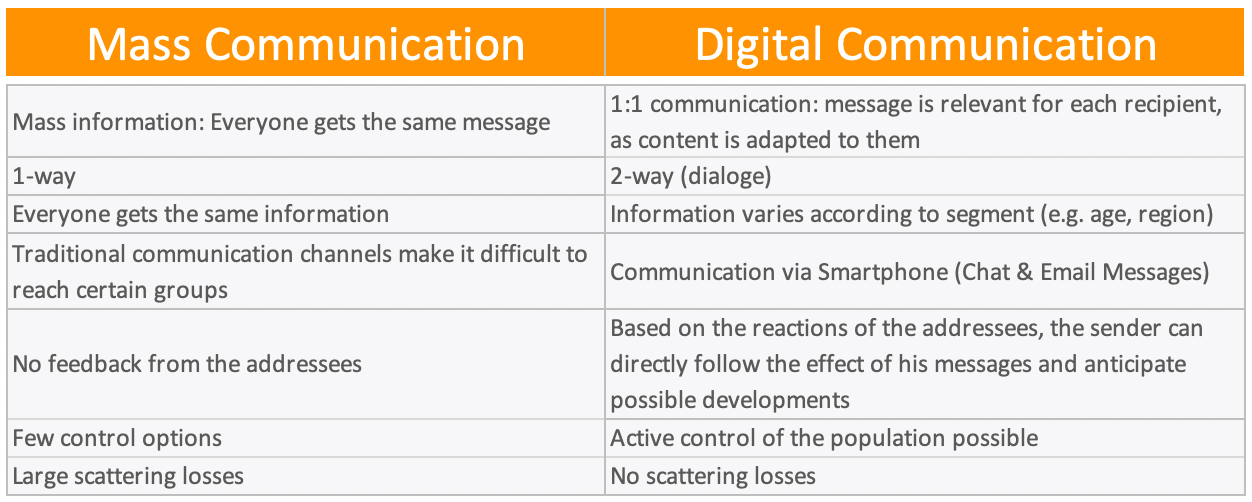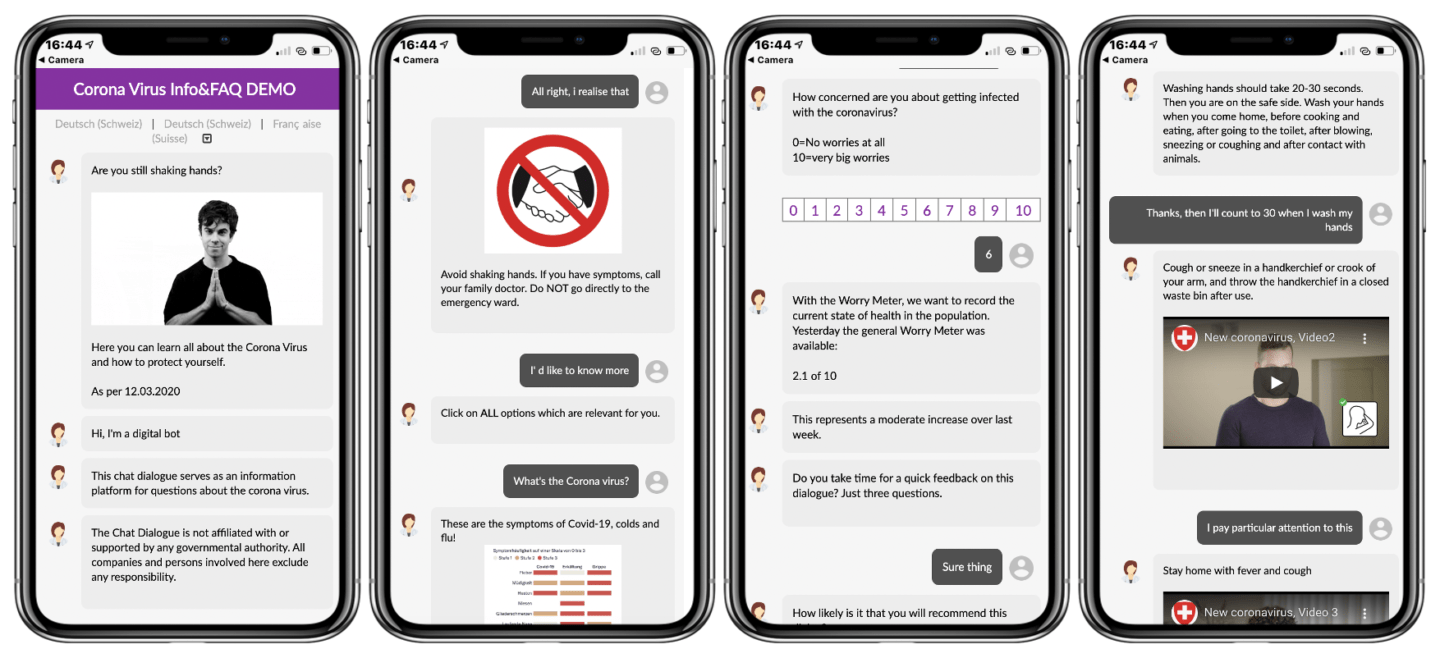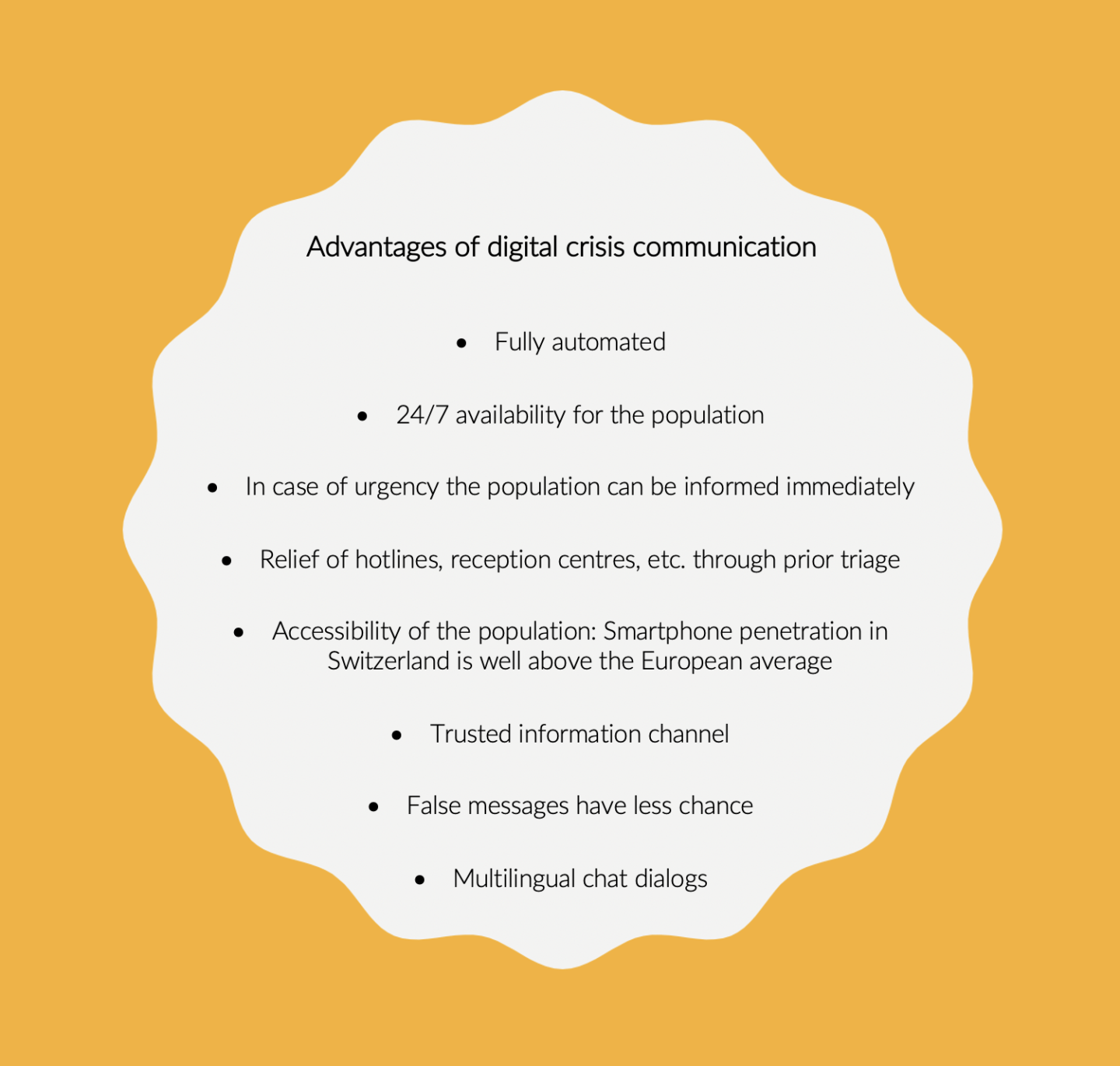
The COVID-19 pandemic has shown has important communication is. Misinformation, fake news, false information have been spreading like wildfire, often confusing and misguiding the people. Imagine if national authorities used dialog automation in national crisis?
Information channels are manifold and have grown exponentially since the start of digitalization. The influence of social media is great, and one can feel overwhelmed by the flood of information that exists today. Add to this the fact that even in times of crisis, fake news is the order of the day. False facts lead to uncertainty, and real, important information is lost. What is needed are reliable and identified sources that inform every single citizen in a timely and easily understandable way.
Communication in times of a crisis
In the event of a national or even global crisis – as is currently happening with Covid 19 – it is one of the most important tasks of governments to provide the population with facts and clear instructions on how to behave via a regular flow of communication. Here, too, a wide range of mass communication channels are available: radio, television, online platforms, etc.
In this flood of communication media, how much reading time does it take to find the information that is essential for me at this very moment? And does this make me feel less insecure in a crisis situation? Mass communication entails a lot of wastage. Finding the information needed at the right moment is usually a very time-consuming task for the reader.
But how would it be if the authorities could communicate directly with each individual citizen in a crisis situation?
Would the public health hotlines still be overloaded and would people go straight to the emergency room instead of consulting their doctor first? I don‘t think so. But what would such ideal communication look like?
A direct line to each individual
The following list shows you the advantage of digital 1:1 communication compared to mass communication in times of crisis:

In the digital age, nothing stands in the way of a 1:1 communication solution. So, an implementation via Dialog Automation from DiALOGiFY would be a quite feasible way to achieve much more effective communication.

Phase 1: Onboarding of citizens
Registration with the Federal Office of Public Health (FOPH) by email or mobile phone number.
Phase 2: Regular direct information from the FOPH and feedback from citizens
The registered persons receive a link daily by email or SMS, with which they can use to call up a chat dialog with the latest developments on the corresponding crisis situation.
The chat dialog is structured in such a way that a different chat history is displayed depending on the personal situation of the individual citizen (for example, if citizens belong to a risk group or live in a region that has been particularly hard hit by the crisis). An individual worry barometer could also be a valuable aid for both the crisis team and the individual citizen.
Phase 3: App as a central information system
An app serves as a central information system on the current situation. For example, it provides information on developments in the various parts of the country or shows the admission capacities of the individual contact points/hospitals.
Triage: By answering specific questions (fully automated), the user is advised, for example, on how to act in concrete terms (no action necessary, consult a doctor, self-isolate, etc.).
Case study: usage of dialog automation in national crisis
We have set up a demo chat dialog on the coronavirus crisis for you, so that you can better imagine what such a chat dialog could look like. Please note that this is only a first, not yet fully developed version of a possible chat dialog.
In the chat dialog, the user is welcomed by a digital assistant and then asked to click on all topics relevant to them from a list:

The automatic chat dialog runs differently depending on the topic selected. During the course of the chat dialog, the user has the option of subscribing to daily updates on the coronavirus crisis by email or SMS.
The current mood of the population is measured by means of the ‘Worry Barometer’ and finally, a short feedback on the current chat dialog is requested.
The chat dialog is enhanced with the integration of various media such as clip arts, gifs, graphics and videos.
These help the flow of reading, provide variety and ensure the user’s attention. With the respective response options, statements are also reinforced.
Can all population groups handle WhatsApp-like automated messages? This question can be clearly answered in the affirmative. Even for 80-year-olds, it is now a matter of course to chat with their grandchildren via their smartphone and to exchange information via video calls.
Advantages of dialog automation in national crisis management
The use of chat dialogs in times of crisis offers many advantages: Chat dialogs are fully automated, available 24 hours a day for 7 days and relieve the burden on hotlines, reception centres and personnel resources, for example, by giving advice on behaviour and structured preliminary clarifications.

Due to today’s smartphone penetration, practically the entire population can be reached very easily. The chat design appears familiar and intuitive; nowadays the usual way of communication on the mobile phone for all age groups.
And last but not least: with a federal authority such as the FOPH as the sender of the chat dialog, a reliable source of information would be guaranteed and fake news would have much less chance of being published.
Click here for a demo chat dialog on the topic of ‘coronavirus information’.
